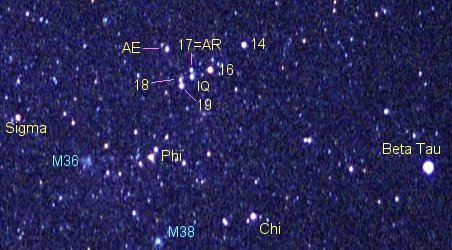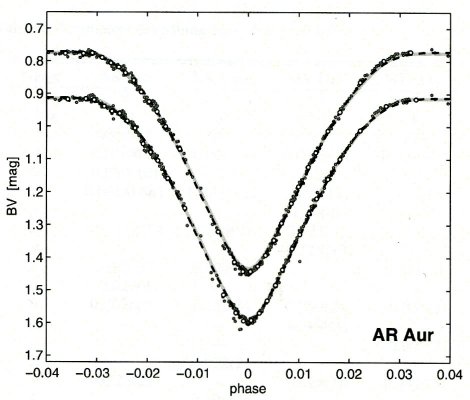
 |
The complex set of stars in southern Auriga harbors an eclipsing binary as well as other interesting objects. |
 |
The light curve of the primary eclipse of AR Aurigae in blue and yellow (visual band) light on an arbitrary scale. "Phase" is the relative fraction of the orbital period of 4.13169 days. The curved bottom of the eclipse's light curve shows that the eclipse is partial. |